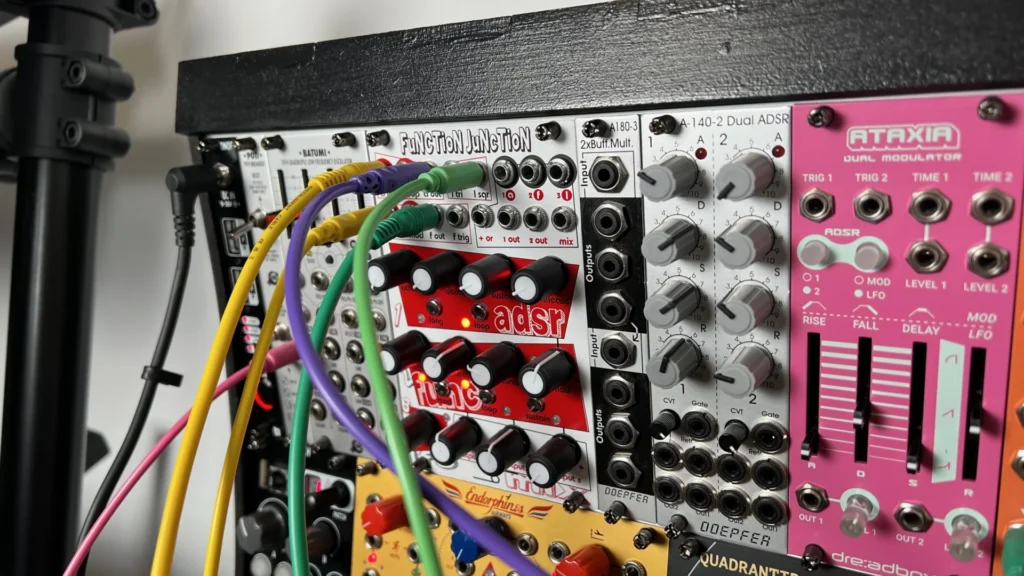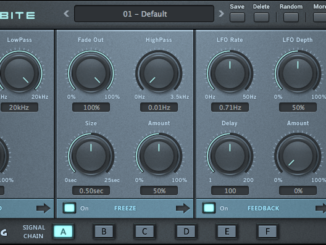Cre8audio Function Junction review: a super flexible modulation hub for Eurorack that packs multiple tools in one module for little money
Modulation is one of the key elements in any Eurorack system. It’s what makes modular a modular synth. Envelopes, LFOs, or function generators are the most popular mod sources. Yes, don’t forget VCAs. A system can’t have enough VCAs. This can be achieved with individual modules, but it takes up a lot of rack space.
Excellent alternatives are all-in-one mod hubs such as the uber-popular Make Noise Maths. There are many exciting others on the market that fly under the radar. One is the Cre8audio Function Junction from 2022.
Cre8audio’s modulation module has been part of my rack for some time. But I haven’t had time to share my experience with you yet. So today, it’s time for a in-depth review. It was released in April 2022 with a deluge of first-day/week reviews. After that, it became quiet around the module.
A problem in today’s media world with first-day reviews. First, a storm of interest, then it dies down, resulting in many releases quickly falling under the radar.
But unlike smartphones, modules don’t get old in the sense of technology and work just as well two years later. So, it’s a perfect moment to bring the module back into the focus of the Eurorack community. Disclaimer: Cre8audio kindly sent me the FunctioN Junction module for review.
Cre8audio Function Junction Review
Function Junction is a 16HP modulation hub with an envelope, function generator, LFO, and a mixer. So, four functions in a single module that cover many modulation grounds.
The front panel consists of two areas. The sockets are in the upper third, and the knobs and buttons are in the remaining two-thirds. I prefer, however, the flipped layout with the knobs on top so the cables don’t hang over the module.
The design is very striking. You can debate whether the red/silver combination is nice or not. One thing is certain: it stands out and is different.
Envelope +
Let’s start with the most classic function, the ADSR envelope (0V – 10V) under the patch sockets. There is a potentiometer for each stage of the envelope and an LED for easy feedback. You can patch and trigger it using the first three patch points: gate input, loop gate in, and envelope out.
As extra functionality, it features a loop button that allows you to switch it to cycling mode, aka LFO. This mode can also be triggered using the gate input.
Plus, with the long button, you double the length of the envelope attack, decay, and release times. Useful for creating pads, droning sounds, and more.
You can also unlock a second ADSR output using the normalization in the built-in mixer. Patch a cable to the mixer 1 output and to a CV destination you want to modulate.
Control the intensity of desire with the attenuverter (+/-), and voilà, you have your second envelope. Not independently but flexible enough.
LFO
The second classic function of the Function Junction is a two-waveform LFO with a dedicated rate knob and outputs for the triangle and square waveforms. You can never have enough traditional LFOs with a good range in a modular system. Here +/ 8V.
Like the envelope, the mixer normalization gives you a second LFO output using the mixer channel 3. By default, it outputs a triangle waveform, also fully adjustable in the amount with the attenuverter mixer 3 pot.
Function Generator
Then, things get a little more complex and sophisticated in the middle with the function generator. It has two stages (attack/decay) with pots, curve control, bi-polar modulation amount, and three buttons.
You can trigger it using the f input. In standard mode, it acts as an attack decay modulator with curve control from exponential to linear and logarithmic. It is already a versatile function generator with three flavors in its basic mode, but there is more.
Pressing the loop button turns the function generator into a flexible LFO. You can achieve various waveforms (sawtooth, ramp…) by tweaking the attack/decay pots in loop mode.
Next is the sustain mode, adding a sustain stage to it. It’s inspiring if you have both modes active, giving you quite complex mod signals. And yes, there is also a second function generator. It is normalized to the mixer channel 2. The amount of it is tweakable using the attenuverter of channel 2.
Not to forget is the mighty ability to voltage control the stages of the FG. Patch a source to it and press the button, allowing you to modulate either the attack or decay or both stages simultaneously. The FG becomes even more flexible and complex with these simple steps.
Another neat function is the end-of-decay output jack that sends out a trigger at the end of the decay stage. This can be used to trigger another envelope or another function. It also works with the internal envelope.
Extras And The Nifty Mixer
The trigger and sustain modes also have other hidden modulation treasures. Thanks to a trigger quirk in the function generator, it can be used as a clock divider. I haven’t tried it myself, but that’s what the manual says—a good reminder to always RTFM.
In sustain mode, on the side, it can also be an envelope follower or a slew generator. For the latter, you can patch, for example, a CV signal into the f input, and the f output goes into a CV input of another module. With the attack and decay controls, you have full control over it.
Special attention should be paid to the built-in sophisticated mixer. This handles all your CV signal-mixing duties. As already seen, it hosts some neat normalization, which extends the number of available modulators. If you delve deeper, you can get more creative things out of the mixer.
On the beginner CV mixing side, you can achieve more exciting complex signals by patching, for example, two different rated LFOs. Further, each channel can mix regular and inverted versions of an incoming signal, giving you patching creative and flexibility.
As an extra on top of all this, Function Junction also has an analog logic output named +OR on the front panel. I use logic function less in my setup, but it enables many options. In this case, it enables you to combine incoming signals, where only the high values are sent to the output.
By default, the analog logic output creates a more unpredictable, chaotic modulation signal. Through creative patching, other options are possible, like the generation of a half-wave rectifier. Creating a bi-functional mixer to handle two different CV duties is also possible.
Cre8audio Function Junction Review Conclusion
The team of Cre8audio has created a super exciting and flexible modulation module with the Function Junction. It’s not a module that you know in five minutes. Like any multi-functional module, you must get involved with and explore the functions. Same with the Make Noise Maths.
However, I prefer the Function Junction here as it’s more accessible and easier to explore for beginners. Exploring is the important thing here. If you only use the most obvious things, you have three modulators (envelope, LFO, and function generator).
Take your time, go deeper, and you get much out of your invested 198€. So, you quickly have twice the number of outputs or more complex modulators. The layout and design of the Function Junction are very own topics.
Cre8audio likes it a little more colorful and eye-catching. The other releases from the young company also show this. You can like it, but you don’t have to. Same for the patching workflow. I prefer a flipped version with the cables on the bottom.
It also has a high-quality feel, and potentiometers are nice and grippy to tweak. In summary, the Cre8audio Function Junction is, with its $199 price tag, unbeatable in terms of price and functionality.
I don’t know of any module that offers so much hands-on, no-menu diving modulation fun for less than 200€/$. Yes, the Behringer Abacus beats it in the price/function ratio, as it’s a copy of the Make Noise Maths, but it lacks originality. You can’t go wrong with the Function Junction from Cre8audio.
Cre8audio Function Junction is now available from retailers for $199/198€ worldwide.
More information here: Cre8audio
Available at my partners
Thomann









 cre8audio Function Junction
cre8audio Function Junction


Be the first to comment